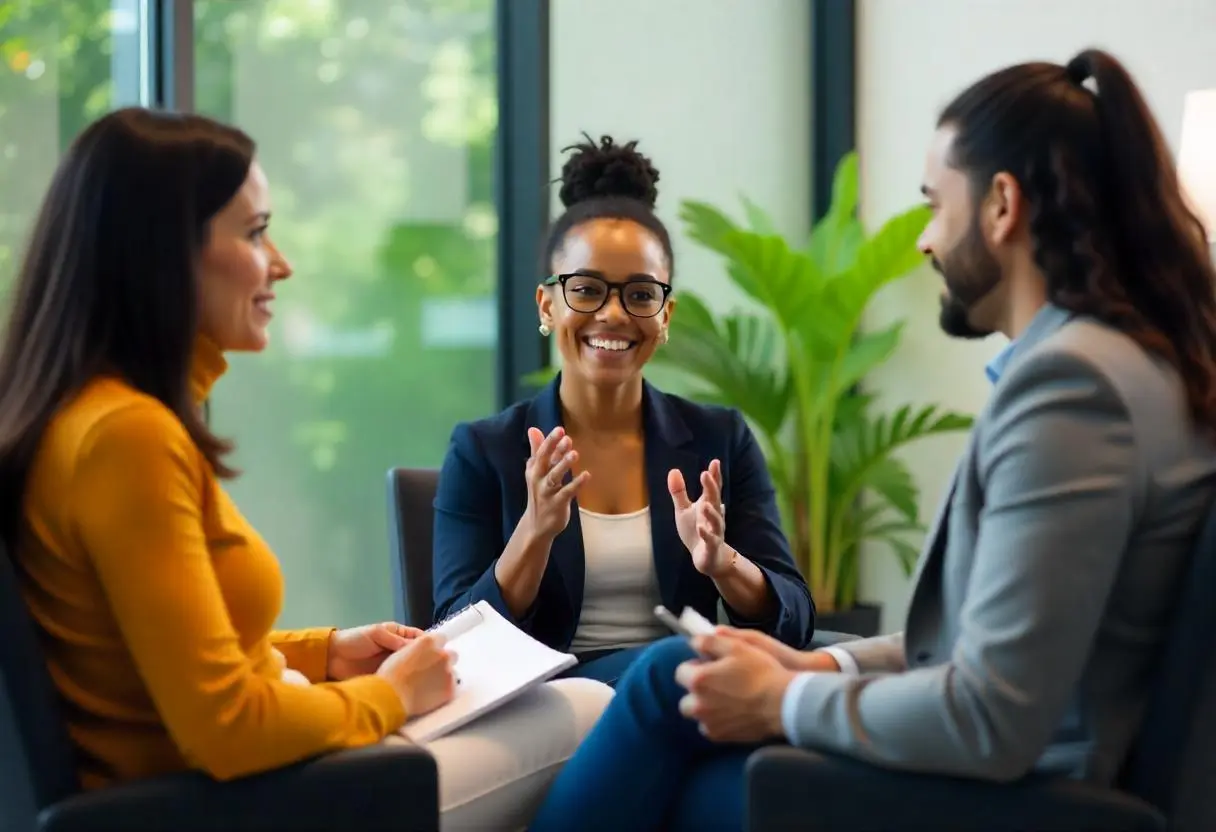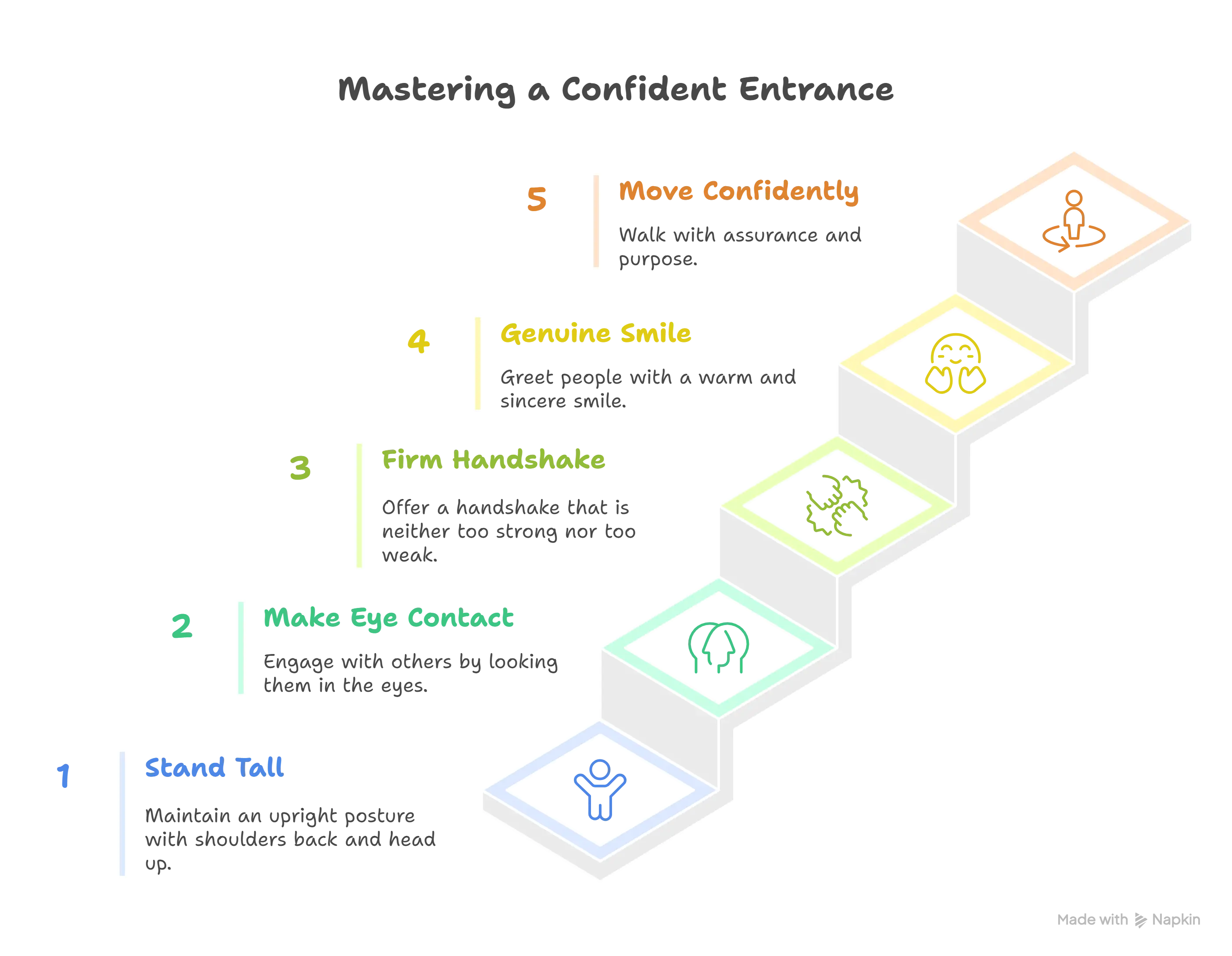
Ever wonder why some candidates get job offers while others with similar qualifications don't? The answer often lies in something most people overlook: body language. Understanding the importance of body language in an interview could be the difference between landing your dream job and watching it slip away in the first seven seconds of meeting your interviewer.
Research shows that 55% of how you're perceived comes from your body language, not your perfectly rehearsed answers. That means before you even speak, hiring managers are forming opinions based on how you walk, sit, and carry yourself. In this guide, we'll explore why nonverbal communication matters so much and how to use it to your advantage.
Why Body Language Matters More Than You Think
Psychologist Albert Mehrabian's research reveals that human communication breaks down to just 7% words, 38% vocal tone, and 55% body language. This means more than half of your message is communicated through nonverbal cues before you even answer the first question. According to Mehrabian's original studies, this formula specifically applies to communications involving feelings and attitudes.
The importance of body language in an interview extends beyond making a good impression. Here's what effective body language accomplishes:
- Builds instant rapport with hiring managers
- Demonstrates confidence without saying a word
- Shows active engagement and genuine interest
- Reinforces your verbal responses for maximum impact
- Helps you stand out from other qualified candidates
Studies indicate that interviewers form first impressions within 7 seconds of meeting you. Research by Princeton psychologists shows that people can form impressions in as little as one-tenth of a second. That snap judgment often determines whether they see you as a strong candidate worth considering or someone who doesn't quite fit the role.
Mastering Your First Impression
Your professional presence starts the moment you enter the building. Everyone you meet—from the receptionist to the hiring manager—is evaluating your nonverbal communication. Here's how to nail those crucial first moments:
The entrance strategy:
- Stand tall with shoulders back and head up
- Make eye contact with everyone you meet
- Offer a firm handshake (avoid both bone-crusher and wet noodle)
- Smile genuinely when greeting people
- Move confidently without rushing or dragging your feet

Pro Tip: Practice your handshake beforehand. Find that sweet spot between firm and gentle—it signals confidence and respect simultaneously.
Reading the Room: Nonverbal Synchronization
The importance of body language in an interview isn't just about your own presence—it's about reading and responding to others' cues. While having a clear structure for your interview answers is crucial, successful candidates understand this is a two-way conversation.
Key interviewer signals to watch for:
| Interviewer Signal | What It Means | Your Response |
|---|---|---|
| Leaning forward | Engaged and interested | Continue with current approach |
| Checking time/phone | Need to wrap up | Conclude your point concisely |
| Nodding frequently | Agreement and encouragement | Elaborate slightly on your point |
| Arms crossed | Skeptical or defensive | Ask an engaging question |
Projecting Confidence Through Strategic Posture
Your posture speaks volumes about your professional presence and confidence level. Research shows that confident positioning not only influences how others perceive you but also affects how you feel about yourself.
Confident posture essentials:
- Sit up straight with shoulders back—it helps you breathe better and think clearer
- Use the full chair instead of perching on the edge (which signals nervousness)
- Lean slightly forward when listening to show engagement
- Keep feet flat on the floor for a grounded, stable appearance
- Rest hands naturally on your lap or desk, avoiding fidgeting
Power Pose Technique: Before your interview, spend two minutes in a private space standing tall with hands on hips. Research by Amy Cuddy shows this can increase confidence hormones in your body.
Eye Contact: The Window to Professional Connection
Eye contact is perhaps the most critical aspect of interview body language. It demonstrates confidence, shows you're engaged, and builds trust with your interviewer. However, it's also easy to get wrong.
Eye contact guidelines that work:
- Maintain eye contact 60-70% of the time when listening
- Look at the interviewer 30-40% of the time when speaking
- Break naturally by glancing at your notes or thinking before answering
- Include everyone if there are multiple interviewers
- Return to eye contact when making important points
For virtual interviews, look directly at the camera lens, not the screen. This creates the impression of direct eye contact for the interviewer and shows you understand modern professional communication.
Managing Nervous Energy
Everyone gets nervous during interviews—it's completely normal. The key isn't eliminating nerves but channeling that energy productively. Understanding the importance of body language in an interview means knowing how to work with your natural responses.
Nervous energy management strategies:
- Arrive 10 minutes early to acclimate to the environment
- Practice deep breathing (4 counts in, hold 4, out 4, hold 4)
- Ground yourself by feeling your feet on the floor
- Use purposeful gestures instead of fidgeting
- Channel energy into enthusiasm rather than anxiety
Remember: a little nervousness shows you care about the opportunity. Most interviewers won't notice unless your body language makes it obvious through excessive fidgeting or defensive postures.
Virtual Interview Body Language
Since remote interviews became standard, the importance of body language in an interview hasn't diminished—it's become more concentrated. When the camera frames your upper body, every gesture carries more weight.
Virtual presence essentials:
- Position camera at eye level to maintain natural eye contact
- Sit 2-3 feet from camera for optimal framing
- Keep gestures within the frame for maximum impact
- Test your lighting to ensure your face is clearly visible
- Maintain good posture even though you're sitting
- Look at the camera lens when making important points
Five Body Language Mistakes That Cost Jobs
These are the most common nonverbal communication mistakes that can derail an otherwise successful interview:
| Mistake | Why It Happens | Quick Fix |
|---|---|---|
| Avoiding eye contact | Nervousness or cultural differences | Practice the 60/30 rule |
| Crossed arms | Cold room or defensive habit | Rest hands on lap or desk |
| Excessive fidgeting | Nervous energy | Use purposeful hand gestures |
| Slouching posture | Fatigue or habit | Imagine a string pulling you up |
| Weak handshake | Trying to be gentle | Match the other person's pressure |
Industry-Specific Considerations
Not all industries value the same type of professional presence. Understanding the importance of body language in an interview means adapting to your specific field:
Tech Companies: Lean toward approachable confidence rather than corporate formality. Being more relaxed while maintaining professional posture often works well. For comprehensive preparation, check out this technical interview preparation guide and our complete tech interview guide for industry-specific strategies.
Finance/Banking: Traditional professional presence is crucial—conservative posture, minimal gestures, formal handshake. Your body language should communicate reliability and trustworthiness.
Creative Fields: You can express more personality through animated gestures and varied postures while maintaining underlying professionalism.
When Things Go Wrong: Recovery Techniques
Even with perfect preparation, awkward moments happen. The importance of body language in an interview includes how you handle unexpected situations:
- Acknowledge briefly without dwelling on mistakes
- Reset your posture and continue confidently
- Use appropriate humor to diffuse tension
- Maintain eye contact to show you're unfazed
- Return focus to the conversation quickly
Remember: grace under pressure often impresses interviewers more than perfect execution. It shows how you handle real workplace challenges.
Your Body Language Success Strategy
Understanding the importance of body language in an interview is like having a secret advantage. Your nonverbal communication is either amplifying your words or drowning them out—you get to choose which.
Start implementing these changes today:
- Practice in everyday situations—order coffee with confident posture
- Record mock interviews to see yourself objectively
- Get feedback from trusted friends or mentors
- Focus on authenticity over perfection
- Remember that preparation builds confidence
For additional interview strategies, explore this comprehensive resource on interview preparation techniques to complement your body language skills.
Frequently Asked Questions
How can I practice body language before an interview?
Start with everyday interactions—practice confident posture while ordering coffee or chatting with colleagues. Record yourself doing mock interviews to see yourself objectively. Focus on one element at a time: first posture, then eye contact, then hand positioning. The key is building muscle memory through repetition.
What if I naturally struggle with eye contact or have poor posture?
Start with small adjustments and set phone reminders if needed. For eye contact, practice the 60/30 rule gradually. Good posture actually helps you breathe better, which naturally reduces anxiety. Cultural differences with eye contact are valid—adapt the guidelines to your comfort level while still showing engagement.
Does body language really affect hiring decisions significantly?
Yes. Research shows 55% of first impressions come from body language, and hiring managers form opinions within 7 seconds. Strong candidates with poor body language often lose out to people with less experience but better professional presence. It's measurable reality that impacts hiring decisions daily.
What should I do if I make body language mistakes during the interview?
Stay calm and reset quickly. Take a sip of water if needed, adjust your posture, and continue. Most interviewers won't notice minor lapses—they're focused on your responses too. The key is getting back on track without drawing attention to the mistake.
How do I maintain consistent body language throughout long interviews?
Focus on fundamentals rather than perfection: good posture, engaged listening, and natural gestures. During panel interviews or all-day sessions, use transitions between rooms as reset opportunities. Stay hydrated and remember that genuine interest in the conversation helps more than forced body language control.
Is virtual interview body language different from in-person?
The principles remain the same, but execution changes. Your upper body carries more weight since that's what's visible. Position your camera at eye level, maintain good posture, and look at the camera lens when making key points. The importance of body language actually intensifies on video because every gesture is concentrated in the frame.